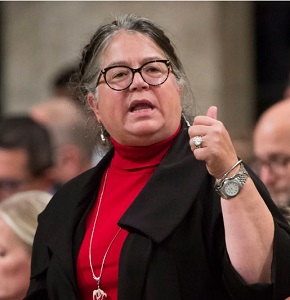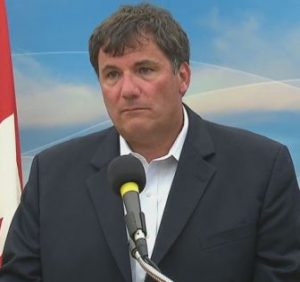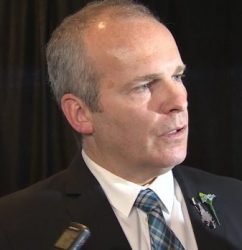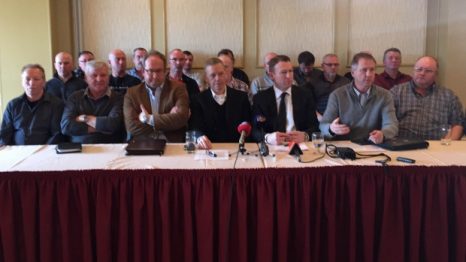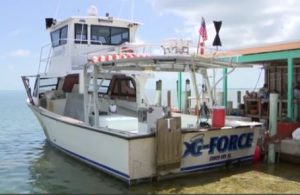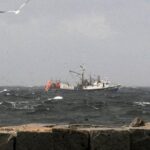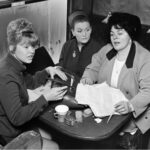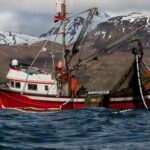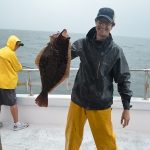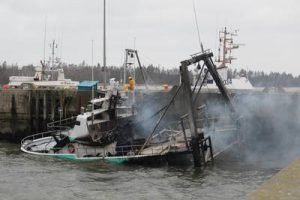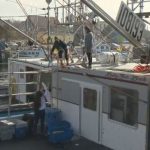Tag Archives: Northern cod
Northern cod remains in cautious zone, DFO says growth has stalled. FFAW critical of methodology
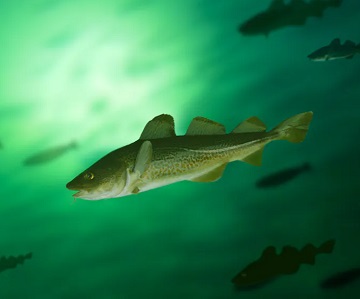 Scientists with the Department of Fisheries and Oceans Canada say the northern cod stock remains above the critical zone in Newfoundland and Labrador but hasn’t shown signs of growth since 2016. DFO released the findings of its latest stock assessment on Tuesday, showing levels are still in the cautious zone. Paul Regular, northern cod stock lead for DFO, said their findings suggest numbers haven’t changed much since 2016. The province’s fisheries union, meanwhile, is questioning the validity of DFO’s findings this year, given that some of the work was done earlier in the season than normal. Video, more, >>click to read<< 11:42
Scientists with the Department of Fisheries and Oceans Canada say the northern cod stock remains above the critical zone in Newfoundland and Labrador but hasn’t shown signs of growth since 2016. DFO released the findings of its latest stock assessment on Tuesday, showing levels are still in the cautious zone. Paul Regular, northern cod stock lead for DFO, said their findings suggest numbers haven’t changed much since 2016. The province’s fisheries union, meanwhile, is questioning the validity of DFO’s findings this year, given that some of the work was done earlier in the season than normal. Video, more, >>click to read<< 11:42

Northern cod numbers may have moved out of critical zone, says federal scientist
Captain Alex Saunders has more experience fishing northern cod than most fishermen. At 81 years old, the fishing captain has fished for cod off the Labrador coast for six decades. This year, he says, was a banner year for that fishery. “There were no codfish in northern Labrador for about 60 years, but this summer the cod were all along the Labrador coast from Blanc Sablan in the south to north of Nain,” Mr. Saunders says. A good catch rate this season meant Mr. Saunders’s crew hauled in  gillnets every day for weeks, returning to communities such as Pinsent’s Arm, a fishing town of about 50 people along the Labrador coast, to land cod at the wharf. But the season’s quick success also meant its early closing. “On a Friday afternoon they said, ‘Get your gear out of the water Sunday by six o’clock,’” Mr. Saunders says of the Department of Fisheries and Oceans’ (DFO) decision to shut down the fall northern cod stewardship fishery weeks earlier than planned – a measure to ensure fishing did not exceed season limits. Photos, >>click to read<< 08:33
gillnets every day for weeks, returning to communities such as Pinsent’s Arm, a fishing town of about 50 people along the Labrador coast, to land cod at the wharf. But the season’s quick success also meant its early closing. “On a Friday afternoon they said, ‘Get your gear out of the water Sunday by six o’clock,’” Mr. Saunders says of the Department of Fisheries and Oceans’ (DFO) decision to shut down the fall northern cod stewardship fishery weeks earlier than planned – a measure to ensure fishing did not exceed season limits. Photos, >>click to read<< 08:33
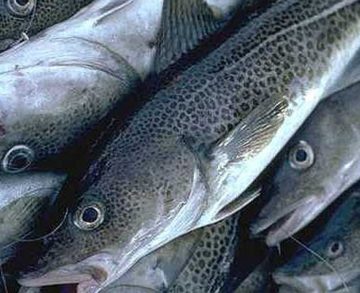
The NLGIDC are pleased with DFO’s revised assessment Model for Northern Cod
The Newfoundland and Labrador Groundfish Industry Development Council (NLGIDC) are pleased that The Department of Fisheries and Oceans (DFO) has implemented a revised model for assessing the 2J3KL cod stock. This model now utilizes data back to 1954 and shows that the 2J3KL cod stock is out of the critical zone and into the cautious zone of the Precautionary Approach (PA) Framework. In fact, the new model indicates the stock has been in the cautious zone since 2016. Previously the model only used data back to 1983. “The NLGIDC and other groups have been seeking changes to the stock assessment model for a number of years,” says Jim Baird, the Chair of the NLGIDC. >>click to read the Press Release<< 14:51

Trudeau Government Continues to Mismanage the Fishing Industry While Fish Harvesters and the Processing Industry Lose Opportunity
Conservative Shadow Minister for Fisheries, Oceans and the Canadian Coast Guard, Clifford Small, released the following statement after the Trudeau government refused to increase quotas for Northern Cod and the Atlantic Mackerel moratorium continues: “Trudeau’s Fisheries Minister, Joyce Murray, has once again ignored fishing industry stakeholders and harvesters by refusing to modestly increase fish quotas. A full survey assessment of fish stocks in Newfoundland has not been completed since 2019 and now because the Liberals failed to live up to their multiple promises to the industry, working people who make their living in the fishing industry will suffer. “The Trudeau government has failed to live up to its commitments on fisheries science and they are punishing working people without a second thought as a result. >click to continue< 16:42
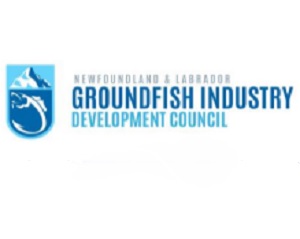
The Newfoundland and Labrador Groundfish Industry Development Council are Disappointed with the Northern Cod Maximum Allowable harvest announced today by DFO
“The NLGIDC were hoping for an increase in the harvest level for 2023 based on the extremely successful cod fishery in the 2J3KL area in 2022”, said James Baird, the chair of the NLGIDC. “Weekly harvest rates for the first 4 weeks of this fishery in 2022 all surpassed the highest weekly landings observed in this fishery since 2016”, continued Baird. “Additionally, the lack of science assessments for Northern cod in 2022 and 2023 continue to hinder the development of this iconic fishery and is a cause of considerable concern for the Newfoundland and Labrador fishing industry”, said Paul Grant, the Executive Vice-President of Beothic Fish Processors Ltd. >click to read< 18:48

DFO Rolls Over Cod Quota, Fails to Use All Available Data for Assessment
Today, the Department of Fisheries and Oceans (DFO) announced a rollover to the Maximum Allowable Harvest (MAH) for the 2J3KL Northern Cod Stewardship fishery. The rollover comes as a surprise to harvesters, who requested an increase this year in line with the health of the stock and commercial needs for both harvesting and processing. Harvesters consider Northern Cod to be one of the best fisheries for both quality and catch rates, and both harvesters and processors are looking for more product this year. >click to read< 17:25
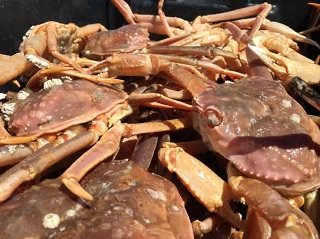
Opinion: Canada failed the N.L. fishery by Harvey Jarvis
The 2023 crash in the price of snow crab and the 1992 moratorium on northern cod have been talked about as the two major catastrophic events in the Newfoundland Labrador inshore fishery. While I totally agree that the two events have inflicted major damage on those who make a living from our ocean’s renewable resources, in my opinion, neither of them is THE major catastrophic event. In 1949, Newfoundland Labrador signed over control and management of the world’s richest renewable resources to Canada. While Canada was supposed to manage those resources to produce maximum benefit to Newfoundland Labrador, the opposite has occurred. >click to read< 13:17

Northern cod 30 years after the moratorium: Confederation’s greatest shame
As the 30th anniversary of the northern cod moratorium looms, DFO cannot say with certainty whether the at-sea fall survey will be completed this year, the small-scale inshore fishery limps on with an average price of 64¢/lb, and the number of active enterprises has fallen to 1,259 — a shadow of the fishery’s glory days when the stock supported 30,000-40,000 workers. On the plus side, scientists with Fisheries and Oceans finally acknowledge that seals “undoubtedly” have an impact on cod — just not as huge as the lack of caplin (which seals also eat by the millions of pounds, but one DFO baby step at a time). >click to read< 08:02

Nearly 30 years into the moratorium, Newfoundlanders look for ways to rebuild Cod
Atlantic cod, the species better known by its population name, Northern cod, is the fish of choice for Newfoundlanders and Labradorians. On a day spent handlining cod on the North Atlantic off of Petty Harbour-Maddox Cove, a centuries-old fishing community just outside of St. John’s, it can be easy to forget cod has a storied history – and a still uncertain future. Northern cod survived near-decimation from overfishing three decades ago, leading the federal department of Fisheries and Oceans Canada (DFO) to shutter the commercial cod fishery in 1992. Meant to last two years, the cod moratorium remains in effect, although DFO reopened an inshore commercial fishery, called the “stewardship fishery,” in 2006. >click to read< 11:00
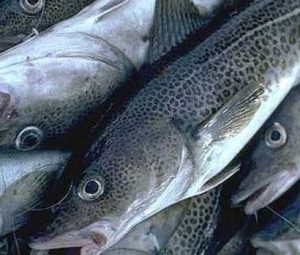
The flawed plan to rebuild Canada’s Northern cod – DFO’s plan is riddled with science and policy weaknesses
Canada is on the cusp of an inauspicious anniversary. Next year will mark 30 years since Newfoundland’s 500-year-old Northern cod fishery was shut down. The fishery was closed on July 2, 1992, because of a massive decline in the cod population, as much as 95 per cent, between the early 1960s and the early 1990s. The socioeconomic consequences were staggering: 30,000 to 40,000 jobs vanished overnight. Closure of what once was the largest cod fishery in the world stimulated an exodus of 10 per cent of the province’s population by the turn of the 21st century. Resource depletion was not anticipated when the federal Fisheries Act was passed in 1868. >click to read< 06:25
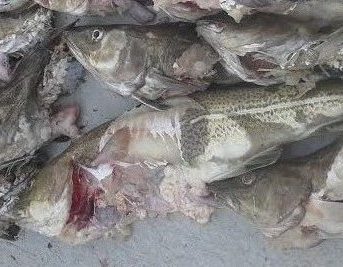
Northern cod growth off NL stalled, latest science indicates
Department of Fisheries and Oceans (DFO) on Friday released it’s latest stock status assessment information on northern cod. “We continue to be concerned about the status of the northern cod stock, which remains in the critical zone,” a technical briefing document states. “Survey indices suggest that recently observed stock growth (2012-2016) may have stalled. Ecosystem conditions indicated limited productivity and reduced food availability may be limiting growth of cod. “The precautionary approach requires that removals be kept at lowest possible levels.” >click to read< Does the precautionary approach include a plan for a major extraction of marine mammals? Asking for a friend. 11:32
Researchers tracking fish to learn more about where they migrate and spawn
Northern cod are about to experience a much higher level of surveillance. The iconic fish — 1,260 of them — are having small transmitters implanted into their bellies. As the cod swim about, their transmitters will send information to 75 acoustic receivers moored to the ocean floor in 13 areas along the eastern continental shelf and in three areas closer to shore in cod fishery area 2J3KL. >click to read< 19:10

FISH-NL calls for immediate halt to all fishing for northern cod outside stewardship fishery; independent assessment of DFO science
“When one of the preeminent fisheries science researchers in the world warns that Fisheries and Oceans may be dramatically overestimating the size of the iconic northern cod stock — which is already classified as critical, and in the 27th year of a commercial fishing moratorium — you listen,” says Ryan Cleary, President of FISH-NL. “From FISH-NL’s perspective, we must also err on the side of caution and take immediate and unprecedented action,” said Cleary. “That means a cancellation of all fishing for northern cod outside of the stewardship fishery — including the sentinel (test) fisheries, cod quality program, recreation/food fishery, and any and all fishing of northern cod by offshore, factory-freezer trawlers, foreign or domestic.” >click to read< 09:02

Cod Populations Might be Losing a Migration ‘Supergene’
North Atlantic cod populations haven’t just decreased in number during the last century — their genetic diversity has plunged, too, which could ultimately impede cod from traveling long distances, according to a new study published in the June 26 issue of Science Advances. In particular, overfishing, climate change or a combination of factors may have led to the loss of a closely-linked group of genes — a “supergene” — associated with migratory behavior. Absence of this supergene may interfere with the cod’s ecological niche and could make populations more vulnerable to future collapse. Researchers investigated genetic variation in Northern cod around the Canadian province of Newfoundl,,, >click to read<15:23

Labrador fleet wants separate quota for northern cod – FFAW and FISH-NL do not support
Fishers from the 2J fleets partnered with the Labrador Fishermen’s Union Shrimp Company to make the proposal. In 2018, a 9,500-tonne limit was placed on the northern cod stewardship fishery for fishing zones 2J3KL.,,, Dwight Russell, a Mary’s Harbour fisherman, is chair of the 2J fishers. He told The Northern Pen the fleet is just looking for a fair share.,, Russell says he doesn’t believe the 2J cod fishing fleet, historically, has been given much opportunity to grow. He says if they could get a higher share of the total Northern cod quota, it would allow the industry to grow in the region. >click to read>08:34

Small rebound for N.L.’s northern cod, but stock still in critical zone
A federal report released Tuesday said northern cod’s spawning stock biomass — fish that can reproduce — was higher than predicted last year, representing a four-per-cent bump from 2018. The stock is currently assessed at 48 per cent of the limit reference point, meaning it is about halfway out of the fisheries department’s “critical” zone. Biologist Karen Dwyer of the Department of Fisheries and Oceans (DFO) said this year’s rise surpassed negative projections after further study of 2017’s mortality numbers. (she’s wrong about the seals) >click to read<19:04

FISH-NL calls for resurrection of arm’s-length body to bridge massive divide between science and inshore harvesters
The Federation of Independent Sea Harvesters of Newfoundland and Labrador (FISH-NL) is calling on Ottawa to resurrect the Fisheries Resource Conservation Council (FRCC) to bridge the enormous divide between fishermen and scientists over the state of fish stocks — northern cod in particular. “DFO scientists and inshore harvesters are once again complete strangers, just like in the early 1990s when the commercial fisheries failed,” says Ryan Cleary, President of FISH-NL. >click to read<13:38
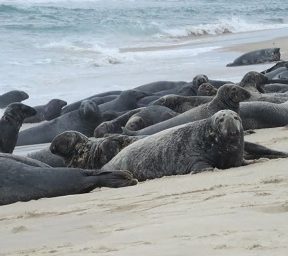
Cod mortality – Northern cod’s fate not the same as southern cousins
There are some fundamental differences between northern cod and their southern gulf cousins that could save the former from extinction, says Dalhousie University professor Jeff Hutchings. That will be a relief to anybody who saw newly published research that predicts Atlantic cod in the Gulf of St. Lawrence could be extinct by 2050.,,, There are a couple of fundamental differences in the two cod populations, Hutchings said, that make the situations difficult to compare. For one, southern gulf cod are being eaten by grey seals, while northern cod are affected by harp seals — a much smaller animal. >click to read<17:50

FISH-NL calls on DFO to halt FFAW fishery for northern cod, leave fish for fishermen
The Federation of Independent Sea Harvesters of Newfoundland and Labrador (FISH-NL) is calling on Fisheries and Oceans to immediately cancel this year’s northern cod quality project, and leave the fish for struggling inshore harvesters to catch. “Inshore harvesters are fit to be tied that while the northern cod stewardship fishery is temporarily closed to them, cod is still being landed through the FFAW-Unifor’s cod quality fishery — which will reduce the overall amount of quota available to harvesters,” says Ryan Cleary, President of FISH-NL. “The cod quality projects are seen by most inshore harvesters as yet another FFAW money-making scheme,” he added. “When it comes to quality and inshore harvesters getting the most money for their fish, the No. 1 action that can be taken is to grade the fish at the wharf — not the plant.”>click to read<12:49
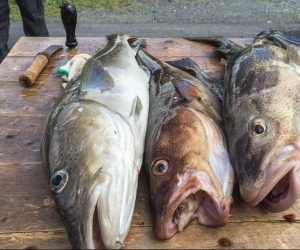
Harvey Jarvis – Ignore cod sentinel data at our peril
Twenty-three years ago, I helped lead a team that designed and implemented the cod sentinel inshore survey on Northern Cod (Southern Avalon, North East Coast and Labrador). The status of Northern Cod has been much in the news lately and the decision, by the Department of Fisheries and Oceans (DFO), to cut the commercial quota has been met with some stiff opposition from the FFAW-Unifor. This prompted me to do a little investigating to see what cod sentinel is telling us about Northern Cod. Based on a review of cod sentinel information, by opposing the 2018 quota reduction by DFO, I can only conclude that the FFAW-Unifor and the Groundfish Industry Development Council (GIDC) appear to be ignoring the last five years of sentinel data. According to information that I have been able to piece together, cod sentinel results are as follows: >click to read<09:03

Hope fading for recovery of northern cod off Newfoundland: ‘This stock isn’t growing’
Hopes have been dashed for a recovery of the once mighty northern cod stock off Newfoundland, a leading conservation group says. Three years after scientists confirmed there were signs of a comeback and catch limits were increased, the federal government decided this week to reduce the limit. Ottawa cited a spring stock assessment that found the cod population had declined 30 per cent after seven years of rebuilding. >click to read<09:55

Disappearance of Daley Bros. another harbinger of bigger crisis facing N.L. fishery
April 20 was a difficult Friday for dozens of people working with Daley Brothers Ltd. in New Harbour. Their hopes of returning to work at the two seafood processing plants in the Trinity Bay community were abruptly dashed, after word spread that the company would not be reopening.,, Owner Terry Daley has refused interview requests, and has even rebuffed questions from Fisheries Minister Gerry Byrne, who’s trying to figure out if the closure is permanent, so he can activate government assistance for the displaced workers.,,, Another prominent company name in the industry is likely gone for good, much like P. Janes & Sons, Breakwater Seafoods and others. >click to read< 16:34

Northern cod numbers no reason to panic: FFAW
Last week’s news on Northern Cod wasn’t what anyone was hoping for, but it’s no cause for panic. There will be fluctuations in biomass from year to year in any stock that’s rebuilding. These same cod stocks had declines from 2009 to 2011, but the overall stock still increased 12-fold in the last 15 years, from an estimated 25,000 metric tonnes to 315,000 metric tonnes. This year’s decrease was not a result of the very small stewardship fishery; natural mortality has been driving the trajectory of this stock since the moratorium. The harvest limits approved,,, >click to read< 19:35
FISH-NL – Northern Cod – “Why is DFO setting us up to fail?”
 Earlier this year, DFO gave harvesters two options for fishing northern cod off Newfoundland’s east coast and Labrador for 2017: 1) fish the entire season at the weekly limit; or 2) fish only from Sept. 17th-Nov. 30th at double the weekly limit. Harvesters who choose option one, and have one cod IQ (individual quota), can fish with six gill nets. Harvesters who choose option 2, and who have three combined IQs (and many harvesters do), are essentially fishing six times the weekly limit, but are still limited to six gill nets. click here to read the press release 14:11
Earlier this year, DFO gave harvesters two options for fishing northern cod off Newfoundland’s east coast and Labrador for 2017: 1) fish the entire season at the weekly limit; or 2) fish only from Sept. 17th-Nov. 30th at double the weekly limit. Harvesters who choose option one, and have one cod IQ (individual quota), can fish with six gill nets. Harvesters who choose option 2, and who have three combined IQs (and many harvesters do), are essentially fishing six times the weekly limit, but are still limited to six gill nets. click here to read the press release 14:11






